We’re All About Butter Yellow

What’s not to love about butter yellow? It’s safe to say that the cheery hue is this season’s “it color,” and we’re falling head over heels for all of the warm, sunny goodness that has made its way into the world of home decor. If you’re looking to embrace this trend—whether in small doses with accessories or by going all in with an area rug—keep reading. We’ve rounded up seven of our favorite butter yellow products on the market that you’ll want to scoop up ASAP.
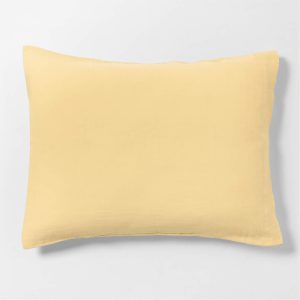
Supersoft Gauze Organic Cotton Lemon Sorbet Standard Bed Pillow Sham
Add a buttery yellow touch to your bed with this pillow sham that will have you dreaming of sunny beaches and all things warm and bright. Made of a soft, gauzy material, it’s sure to lull you right to sleep.
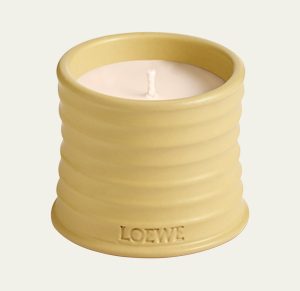
Small Honeysuckle Candle, 5.8 oz.
Loewe knows a thing or two about how to make a top-quality candle. Treat yourself to this honeysuckle scent in a darling butter yellow vessel. It would make the perfect summertime treat for yourself (or your weekend host).

Butter yellow + ruffles = tons of on-trend goodness. Display this chic vase on your coffee table, nightstand, mantel, you name it. It’ll honestly look stunning anywhere and makes for an excellent gift for the person who has everything.

Kids Polly Modern Metal Table Lamp (13″)
This lamp is technically listed under West Elm’s kids section, but that doesn’t mean it wouldn’t shine in adult spaces, too. Place it on your desk for a sunny pick-me-up during the work day.
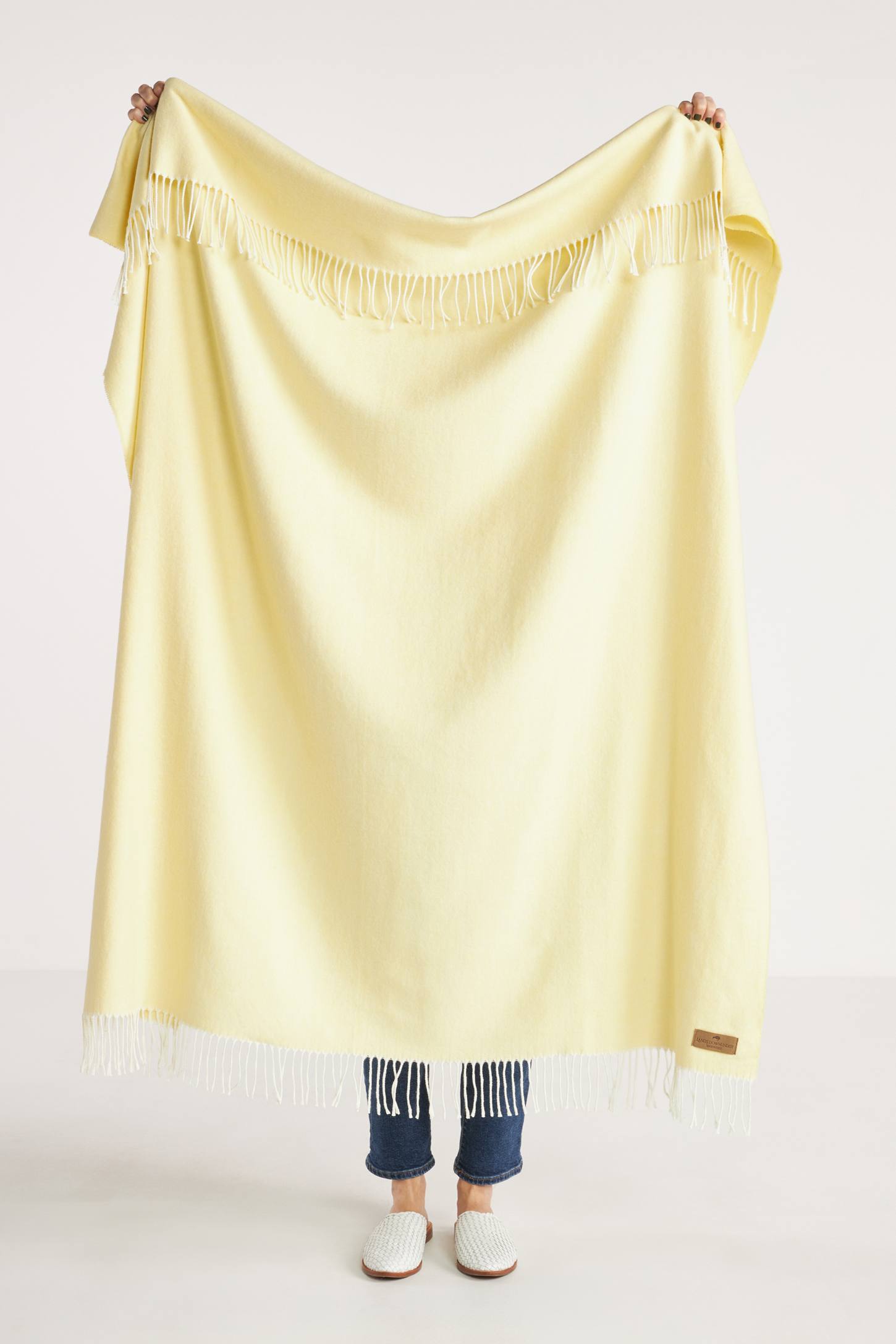
Solid Herringbone Throw Blanket
Snuggle up under this butter-yellow throw blanket as you curl up on the sofa and binge your favorite shows. It’s easy to machine wash in the event of any spills, which is always a bonus in our book!
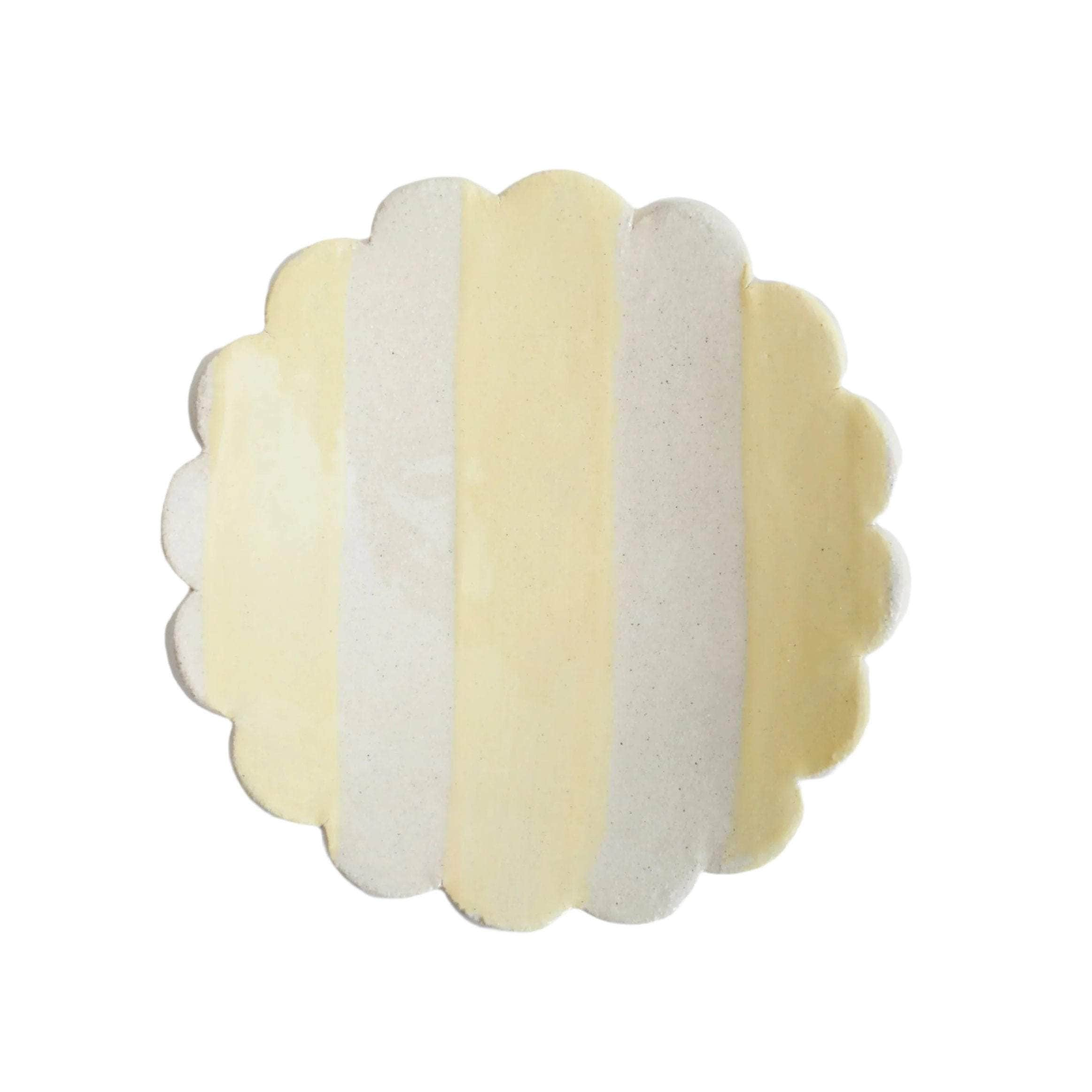
Duci Striped Trinket Dish Yellow
Trinket dishes will always come in handy in any room of the home, whether you’re using one to corral everyday jewelry on the dresser, house loose change in the entryway, or even style one with a candle on top of it. This striped piece screams summertime.
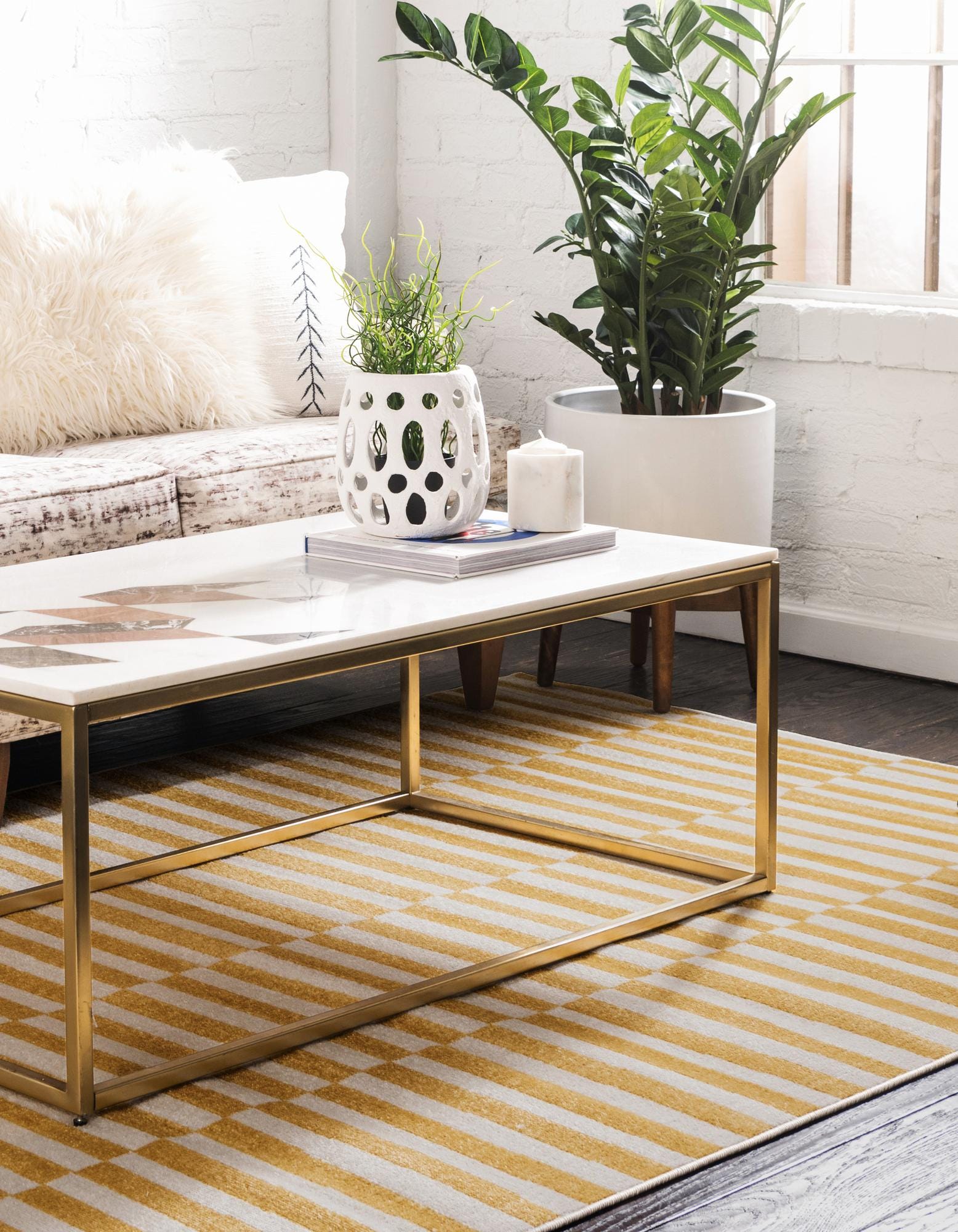
Move over, boring beige rugs. This butter yellow beauty is just begging to bring some life into your living room (or bedroom, nursery, office, and so on!). Its playful pattern will surely put a smile on your face.

Sarah Lyon is a New York City-based freelance writer, originally from Bethesda, MD. She contributes to a number of national design and lifestyle publications like Architectural Digest, Apartment Therapy, MyDomaine, the Washington Post, and more. Sarah also works with designers to help them style spaces for photo shoots. Find more shelfies on her Instagram page, @sarahlyon9
Visit corcoranmce.com to search listings for sale in Washington, D.C., Maryland, Virginia, and West Virginia.
Don’t miss a post! Get the latest local guides and neighborhood news straight to your inbox!
Designing For Keeps: Timeless Trends in Custom Home Building
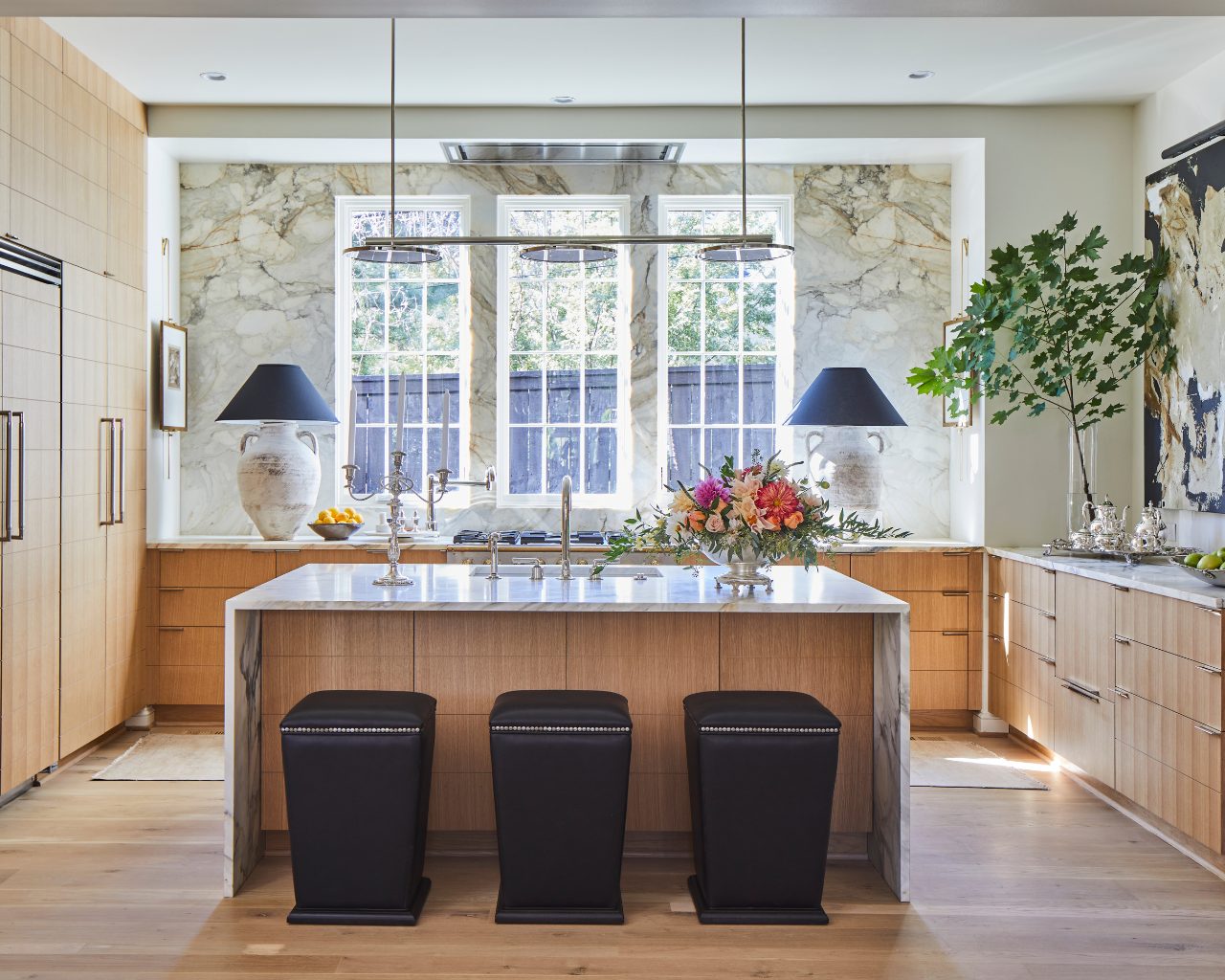
This week we would like to share inspiration from our partners at The Scout Guide.
We tapped husband-and-wife team Kevin and Leigh Misso, owners of River Brook Design & Build, a renowned full-service architectural design and construction company in Birmingham, Alabama, to get the scoop on what’s trending in home design. From building from the ground up to adding on or renovating, the lauded firm has a keen eye for detail and a pulse on upcoming trends, making them a go-to for creating timeless dream homes.
Honest materials
Opt for classic, genuine materials like wood, stone, and copper to elevate your home’s exterior. Think cedar roofing, copper gutters, and limestone accents for a sophisticated and timeless facade.
Eat-in kitchens
The heart of the home is returning to its roots. Embrace a more traditional table experience in the kitchen, whether it’s a breakfast nook or a full-fledged table, to foster connection and togetherness.
Prep kitchens
Also known as working kitchens, these adjacent spaces dedicated to food prep and cleanup will keep the main kitchen tidy and guest-ready — a must for entertaining.
Multiple islands
Enhance the functionality and flow of your kitchen by separating the island into two distinct work areas with a pathway between.
Open concepts reimagined
The open concept gets a refresh. Create defined spaces for different activities — think interconnected spaces that offer both togetherness and separation.
Cozy reading nooks
Carve out peaceful escapes for relaxation and reflection with inviting reading nooks furnished with built-in benches and clever storage solutions.

Color drenching and wallpaper
Embrace bold colors and statement wallpapers. Painting walls, trim, and ceilings in the same hue, otherwise known as color drenching, creates a dramatic and immersive effect that actually tricks the eye into believing ceilings are higher.
Luxurious bathroom retreats
Elevate your bathroom with his-and-hers vanities, separate primary closets, and specialty cabinet inserts for hair styling tools.
Seamless indoor-outdoor living
Blur the lines between indoors and out with screened-in porches, patios, and outdoor kitchens that become extensions of the home.
Photography by Laurey Glenn; design & construction by River Brook. River Brook appears in The Scout Guide Birmingham. Discover more of River Brook’s portfolio, here.
Visit corcoranmce.com to search listings for sale in Washington, D.C., Maryland, Virginia, and West Virginia.
Don’t miss a post! Get the latest local guides and neighborhood news straight to your inbox!
Patio Finds We’re Loving Under $500
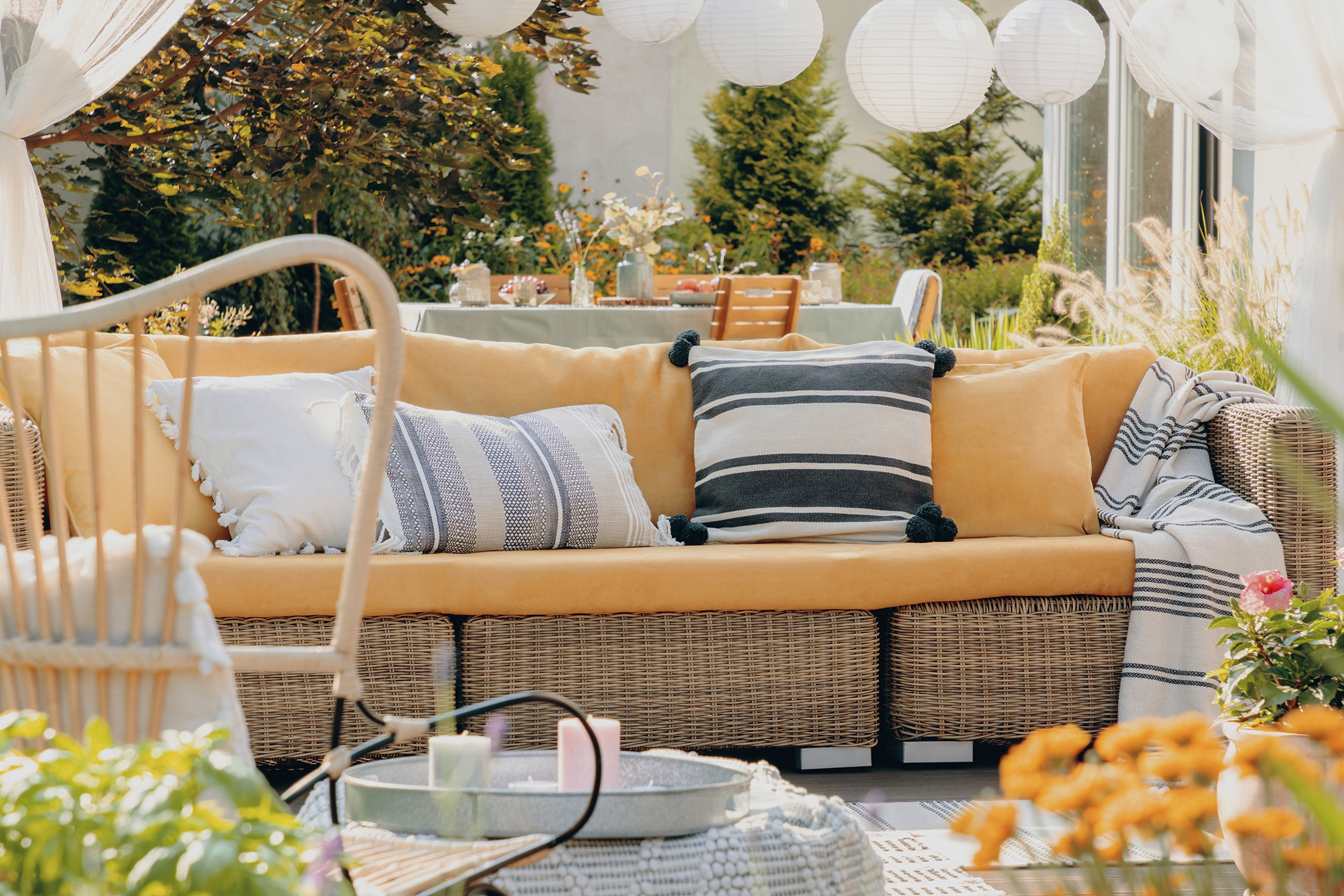
If you haven’t yet gotten your patio ready for late spring and summer, now is the time to do so! There are many affordable and stylish pieces just waiting to shine in your space, whether you’re in the market for small furniture, decorative accessories, faux plants, or more. Below are eight of our favorite patio picks that will help you make the most of the season, and best of all, everything is under $500.
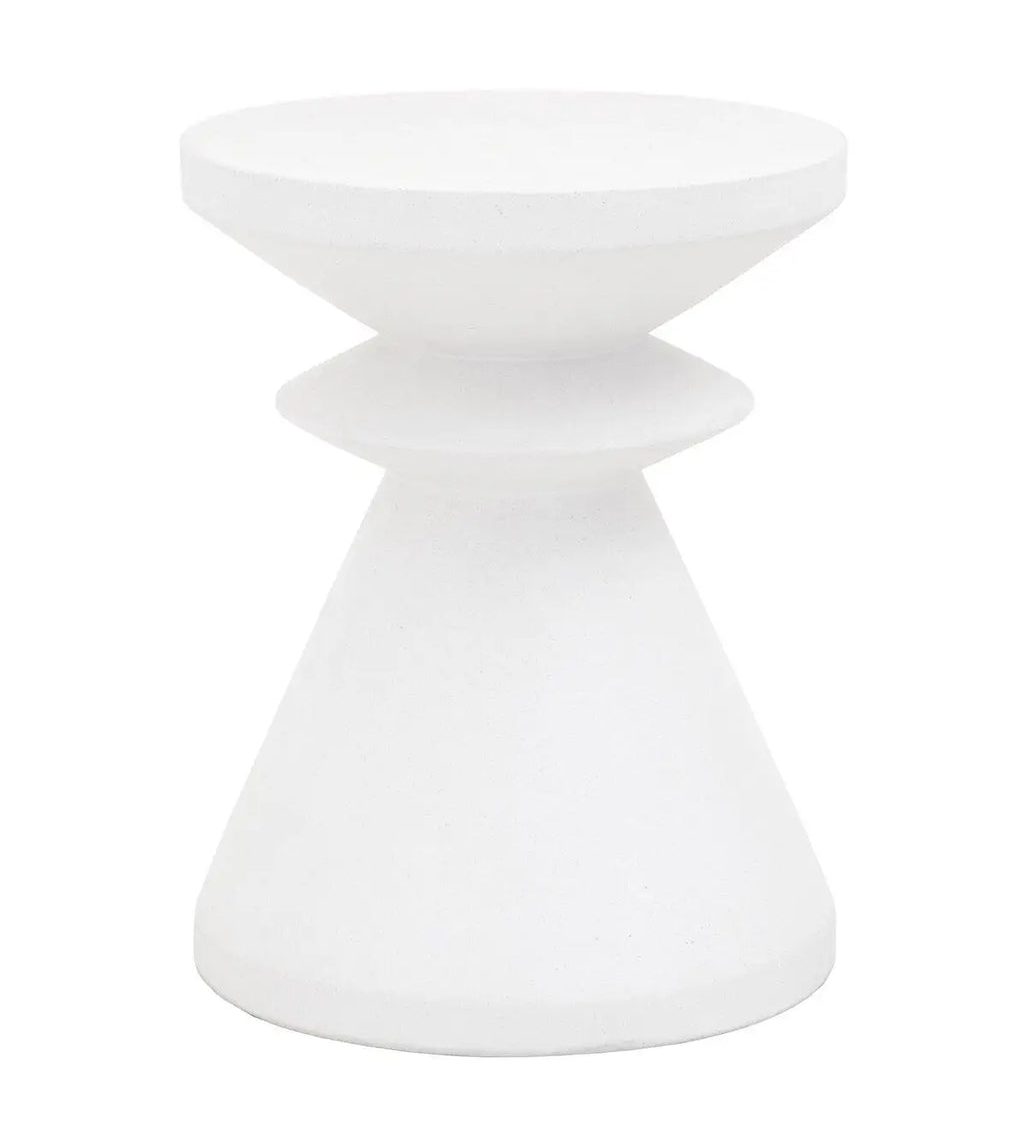
Pawn Accent Table, $319
Add a contemporary touch to your porch or patio with this chic accent table that is perfect for holding your snacks or cocktails as you soak up the fresh air. This piece is also stain-resistant, meaning it’s stylish yet not too fussy—outdoor furniture should never be super precious, after all!
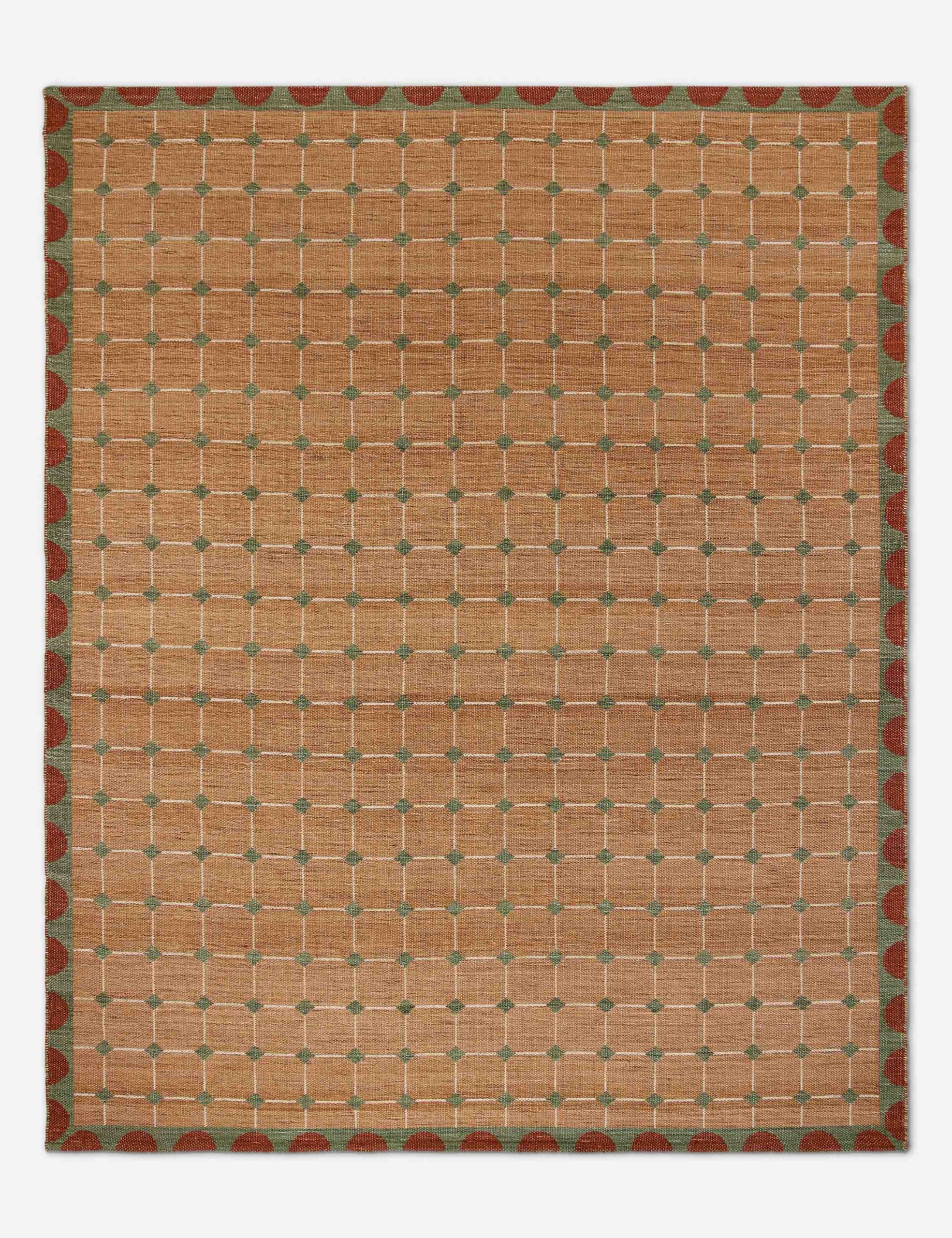
Crawford Indoor/Outdoor Rug, $398 for a 5’ x 8’ rug
Infuse your outdoor space with some welcome color when you lay down this rug with a mosaic pattern that was inspired by Mediterranean villas. It comes in seven different sizes, so there’s really something for everyone, no matter how large or small your space. It can be used indoors, if you wish, too.
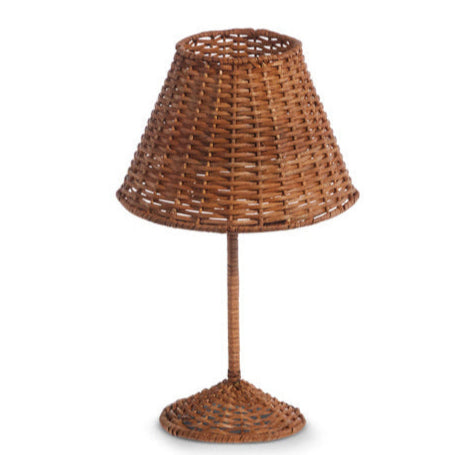
Woven Lamp Candle Holder, $79
This woven lamp candle holder couldn’t be more stunning and adds a fun decorative touch to any outdoor area while taking your space from day to night. Simply place a small votive candle inside and sit back and bask in the soft glow.
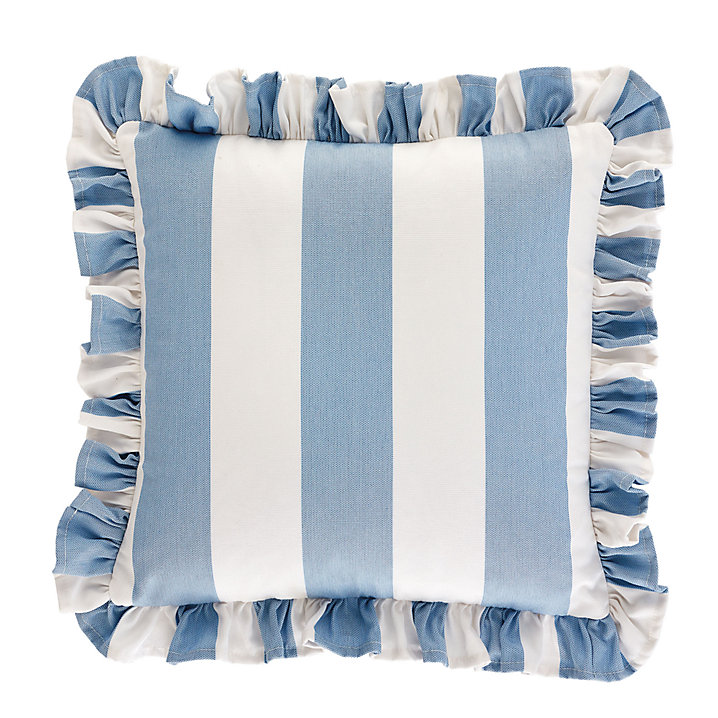
Sunbrella Outdoor Ruffle Pillow, starts at $92
Interior designers swear by Sunbrella fabric, so you know you’re in good hands when it comes to this striped pillow. Better yet, the scalloped edge couldn’t be cuter or more on trend.
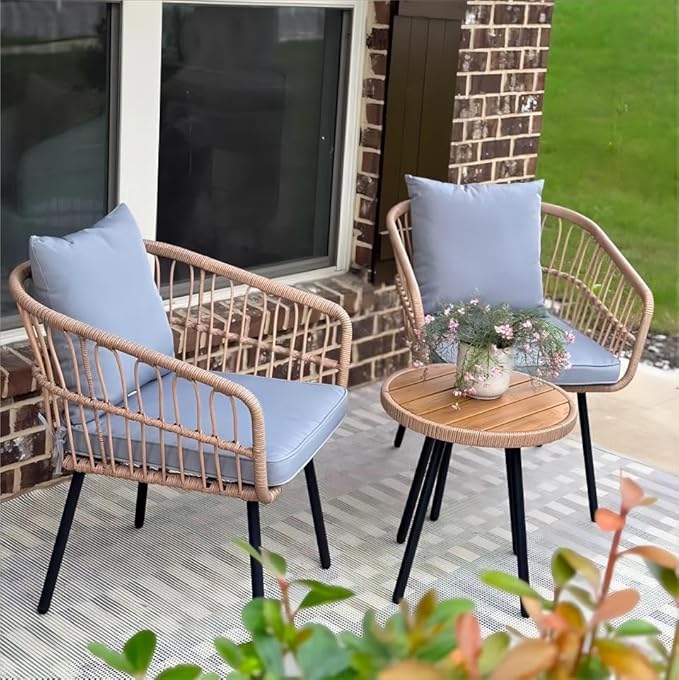
3 Pieces Outdoor Wicker Patio Conversation Bistro, $144
This wicker set makes it easy to invite a friend over for a patio hang (without breaking the bank in the process of setting up your space!). The soft cushions will make you want to relax outside all day long, and the wicker material is way more design-forward than other styles.
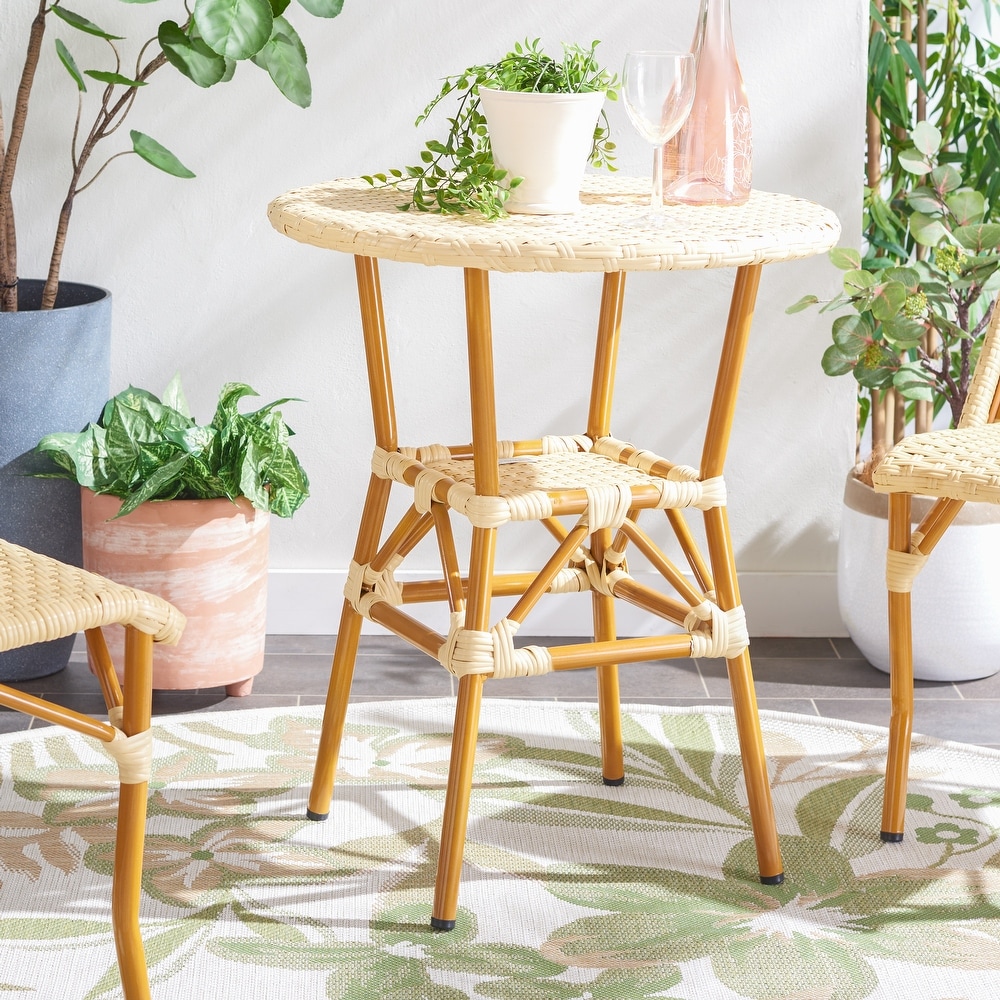
California Bistro Table, $159
If you prefer a more traditional table height, this bistro table is a great pick that will bring a touch of Paris to your yard in no time. It comes in 7 color options. You’ll feel like you’re sitting at a downtown cafe—minus the crowds!
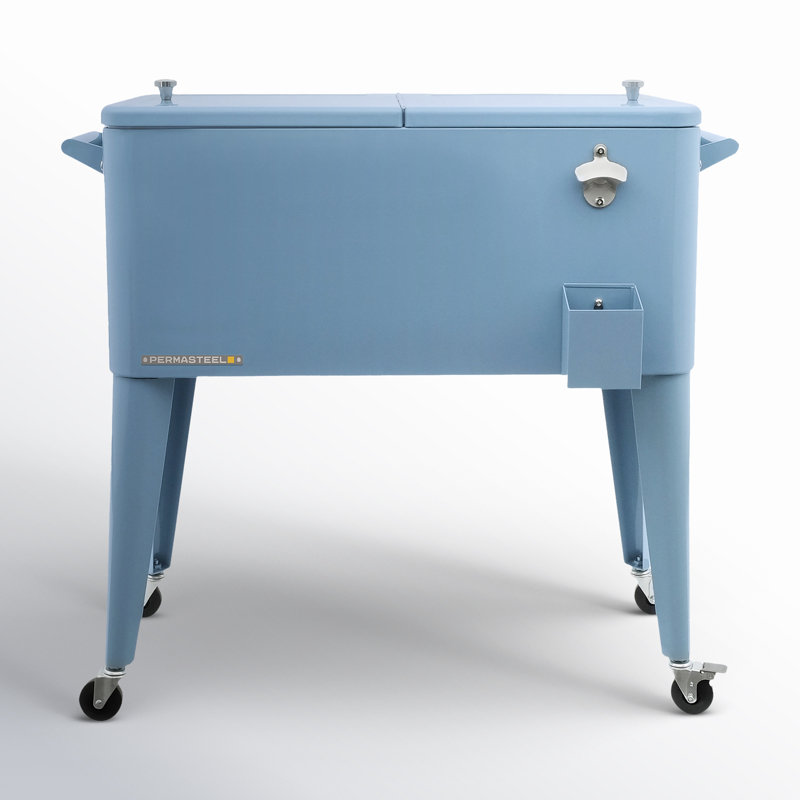
80-Qt Classic Outdoor Patio Cooler On Wheels, $201
A cooler like this one makes outdoor entertaining a breeze and even features a built-in bottle opener so that guests can easily help themselves to another beverage. The cooler comes in seven shades, ranging from neutral to colorful, and is an excellent Father’s Day gift idea, too (it ships in just a day!).
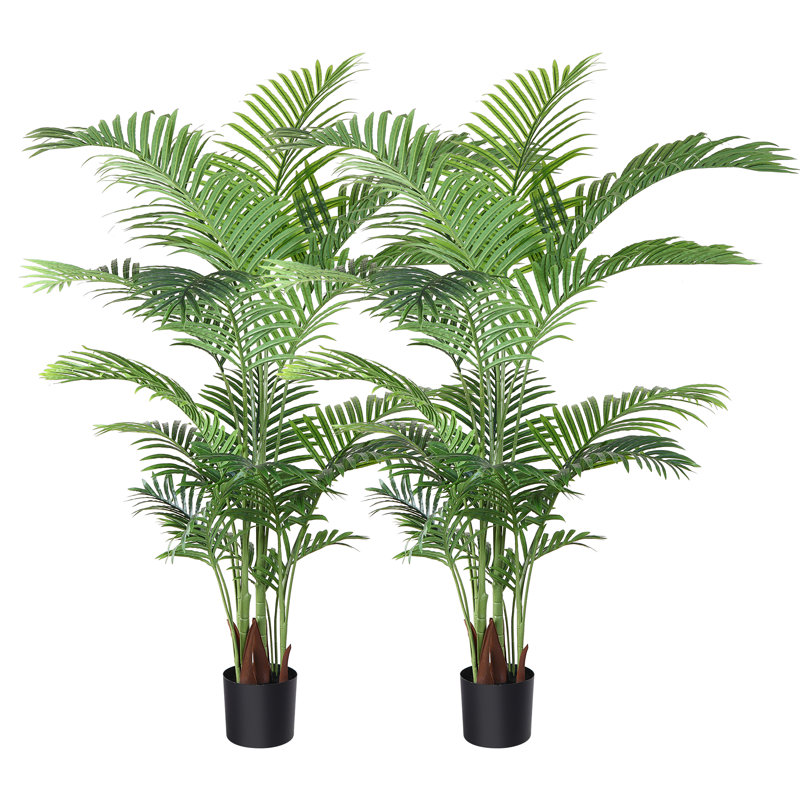
Artificial UV Resistant Palm Tree in Pot Set, $120
Whether you crave a touch of greenery or need to construct your own privacy screen of sorts, tall faux potted plants like these will get the job done. At $120 for a set of two, they’re much more affordable than the real thing and require zero maintenance.

Sarah Lyon is a New York City-based freelance writer, originally from Bethesda, MD. She contributes to a number of national design and lifestyle publications like Architectural Digest, Apartment Therapy, MyDomaine, the Washington Post, and more. Sarah also works with designers to help them style spaces for photo shoots. Find more shelfies on her Instagram page, @sarahlyon9
Visit corcoranmce.com to search listings for sale in Washington, D.C., Maryland, Virginia, and West Virginia.
Don’t miss a post! Get the latest local guides and neighborhood news straight to your inbox!
Color Me Inspired, But Confused… Why Are There So Many Colors of the Year?

Whether you’re a trend setter, a traditionalist, or some combination of both, there’s a Color of the Year waiting for you.
If you’ve been house-hunting this spring, you’ve likely walked through a number of perfectly-staged listings designed to make you fall in love with the layout and start mentally placing your own furniture in the space. You may have noticed that the paint scheme was light, bright, and non-instrustive, a blank canvas on which to imagine your own decor taking shape. And while minimalism might help sell a property, it’s not always the favorite approach to making a home.
When the final closing docs have been signed and you’re prepping to move into your lovely new place, it’s the perfect time to line up painting pros and take the first steps toward putting your personality on full display. But where to start for inspiration?
Luckily, there is no shortage of color wheels to take for a spin, and every major paint company has their own version of “what’s in” for discerning decorators. Starting in December and rolling out into the New Year, trendsetters and marketers start promoting their version of “THE” color and related hues that they feel capture the vibe, attitude, and zeitgeist of the day.
While recent design trends have leaned toward “safe” neutrals with a pop of color here or there, the current mood of paint designers clearly seems to be … “moody.” Cool whites, blues, grays, and beiges are giving way to rich tones of brown, plum, deep greens, and burgundy which invite feelings of comfort, coziness, calm, and luxury.
Coastal Grandma, meet the Sumptuous Sophisticate.
Let’s take a look at what’s trending so far in 2025 and how they each came to be named “Color of the Year.”
Pantone is a name synonymous with color and since its founding in 1963 has touted itself as a “color communication system,” with their color-coding systems reigning as the standard across apparel, decor, and accessories. Pantone announced the first “Color of the Year” in 1999, anointing Cerulean as the color to watch. (Fans of The Devil Wears Prada know this color all too well.)
For 2025, Pantone dived deep into indulgence with Mocha Mousse, “a warming, brown hue imbued with richness. It nurtures … with its suggestion of the delectable qualities of chocolate and coffee, answering our desire for comfort.” From there, users are encouraged to explore five complementary palettes – ranging from “Relaxed Elegance” to “Floral Pathways” – for a balanced feeling throughout the home.

Mocha Mousse by Pantone (Photos courtesy of Pantone)

Given the influence that Pantone wields throughout the design world, it’s not surprising to see shades similar to Mocha Mousse also being showcased.
Instead of picking one color, Sherwin-Williams, the nation’s largest paint supplier, announced their first-ever “Color Capsule” with a whopping nine colors meant to work in harmony. Grounded, Sunbleached, Chartreuse, Bosc Pear, White Snow, Rain Cloud, Clove, Malabar, and Mauve Finery run the gamut from dark brown to bright white, giving the palette flexibility for any style of home.
“There was a vintage vibe that we kept leaning towards when we were looking at the palette,” Emily Katz shared on the Sherwin-Williams’ blog, Stir. “Nostalgia is having a big impact on design. People are craving those authentic pieces of the past in their homes, so this palette pulled influences from those iconic design styles.”

Grounded by Sherwin-Williams (Photo courtesy of Sherwin-Williams)
Not to be outdone in the curated mood department, Benjamin Moore’s Cinnamon Slate continues the trend of soft, deep coloring that blends a delicate mix of heather plum and velvety brown to provide “a smooth familiarity to any design.” Benjamin Moore’s experts said this “restorative color” was chosen out of a “need for balance and reassurance.”
“It reflects the sentiment that’s in the air and that yearning for comfort and having a color that’s really going to surround you in a beautiful way,” explained Andrea Magno, Director of Marketing and Design for Benjamin Moore.

Cinnamon Slate by Benjamin Moore (Photo courtesy of Benjamin Moore)
House Beautiful and Martha Stewart both offer a round-up of all the Colors of the Year, all showcasing similar slates of muted, earthy, and darkly rich tones. Meanwhile, our friends at The Scout Guide reached out to their favorite local designers to get their take on what they hope to see in their favorite places (note: it’s not as dark as the national picks.)
No matter your own personal style – whether it’s firmly set or still being discovered – there’s a perfect palette out there to help you put it on display. And if you don’t see what you like in 2025’s offerings, just wait for the next class of Colors of the Year!
Your Corcoran McEnearney agent can recommend the right design, decor, and home service professionals to help you get settled into your next abode. Reach out to your Trusted Advisor today to get started.
Karisue Wyson
Karisue Wyson is the Director of Education for Corcoran McEnearney and was previously a Top Producer Realtor® in the Alexandria Office.
Visit corcoranmce.com to search listings for sale in Washington, D.C., Maryland, Virginia, and West Virginia.
Don’t miss a post! Get the latest local guides and neighborhood news straight to your inbox!
Finding Calm in Your Closet
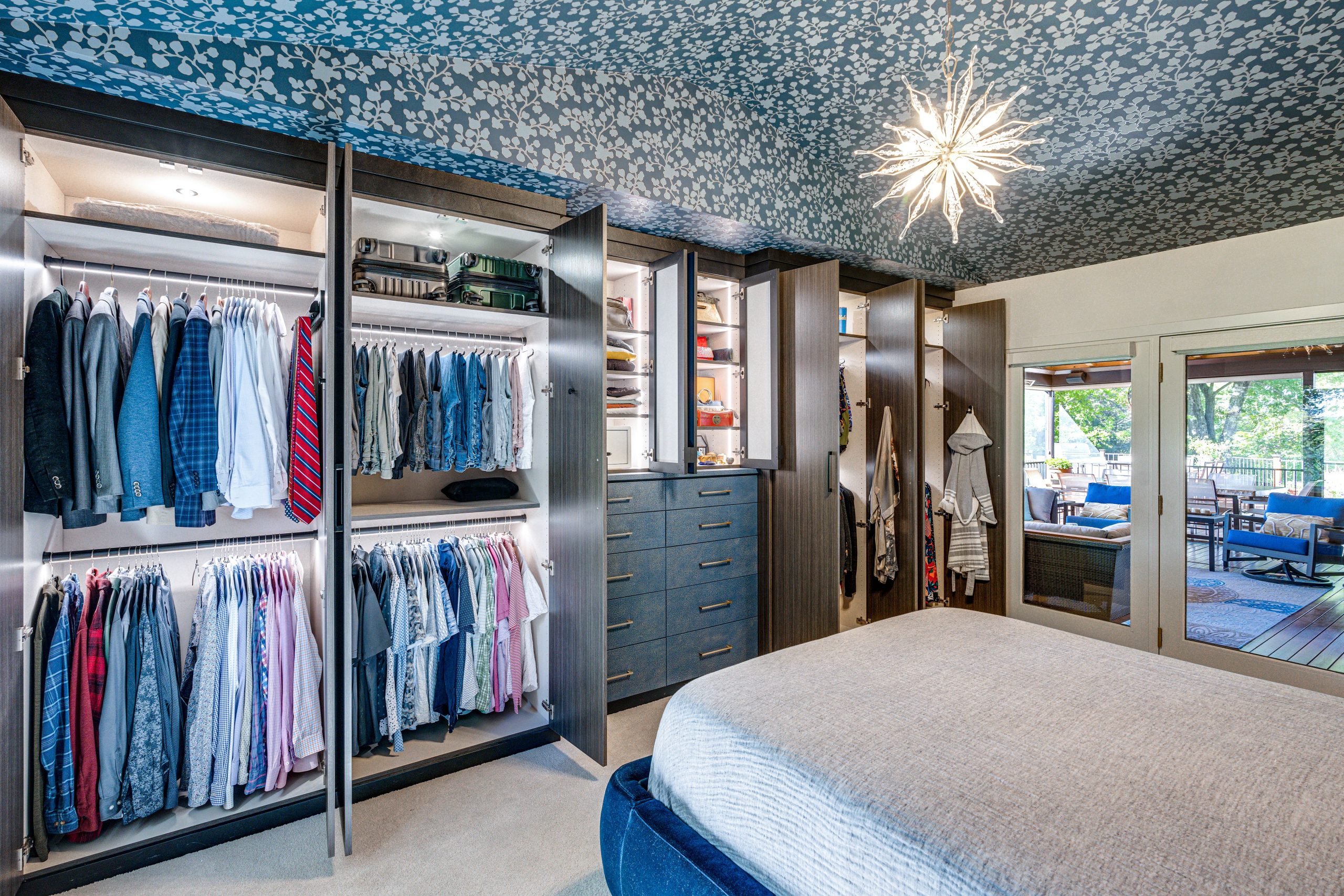
Closets provide homeowners with the means to store clothes and other items out of the way so they don’t crowd the rest of the house. But some people can underestimate just how many possessions they have. As a result, closets tend to lack the room needed to house everything you want to tuck away. If your closet never seems to have enough space, you’re not alone. Experts at The Tailored Closet of Greater Washington, D.C. share top tips for finding calm rather than chaos in your closet.
Reduce Clutter
Closets are often loaded with clutter. Because they’re “out of sight” places, it can be easy to make a habit of tossing things into the closet and forgetting about them. A cluttered closet space is one of the biggest issues that make it seem like there isn’t enough space for your belongings.
To start setting up an organized closet, remove everything from the area. Doing so enables you to not gauge the closet’s actual dimensions, but it provides you with an easy way to access everything you plan to store. Then, sort your belongings into piles, getting rid of what you don’t want, don’t wear and don’t need.
Create an Inventory
When you’re done downsizing your closet items (donating or throwing away what you don’t need), sort what’s left into segments of closely related things. For example, you might want to note how many pairs of shoes you have, how many work uniforms you need to make a place for, or seasonal items you’ll want to store more efficiently.
After creating an inventory and categorizing everything you want to store in your closet, you’ll have a better idea of how much space you’ll each need.
Optimizing Your Space
When your closet is empty, it’ll be easier to plan out designated areas for all of your possessions. In addition, an empty closet simplifies the process of trying to determine the sizes of various organizational tools your closet space can reasonably accommodate.
For example, if you have extensive shelf space but very little space for hanging items, it’ll give you an idea of the type of additions you’ll need to install to optimize the space you have available.
Use Functional Organizational Accessories
Functional organizational accessories are a lifesaver in a closet! Using these options successfully is just a matter of deciding what you need and how you plan to accommodate that need. Using wall hangers and bins helps save space that shoes and bags would ordinarily take up. Plus, they’re easy to assemble and install.
 Jennifer Zschunke
Jennifer Zschunke
Jennifer Zschunke is Marketing Manager for The Tailored Closet and PremierGarage of Greater Washington, D.C., where our mission is to turn chaos into calm in our customers’ homes and garages, giving them time to live their best lives. With over 12 years in the remodeling industry in marketing and client experience, Jennifer manages digital media, print marketing, event management, and the client journey for the company.
Visit corcoranmce.com to search listings for sale in Washington, D.C., Maryland, Virginia, and West Virginia.
Don’t miss a post! Get the latest local guides and neighborhood news straight to your inbox!
Staying Ahead of Home Tech Trends in 2025
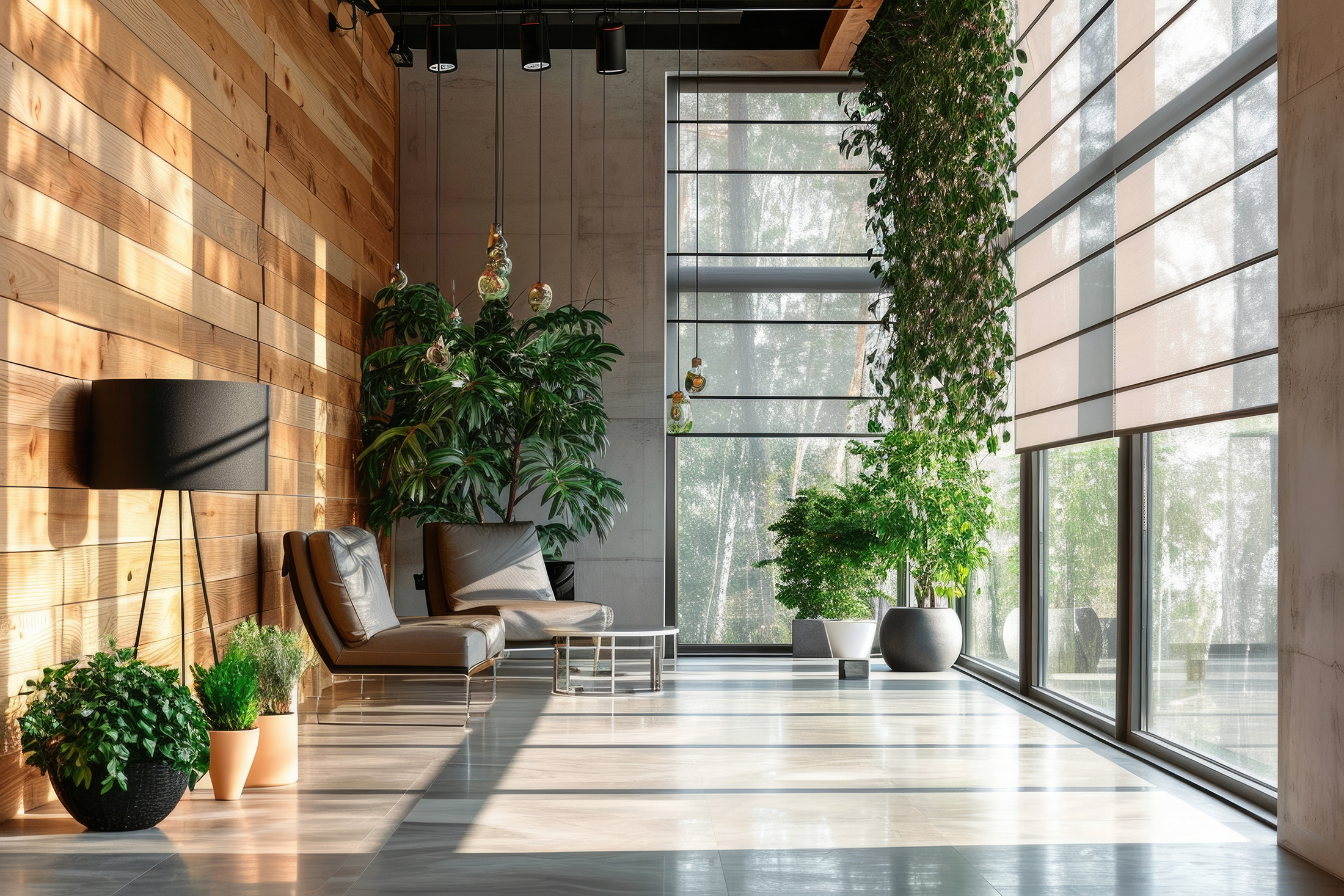
Technology evolves at lightning speed, making it tough to keep up with the latest advancements. That’s why partnering with a professional integrator is crucial when choosing smart systems for your home. “At Daisy, we stay ahead of industry trends, so you don’t have to,” says Justin Tsuchida, owner of Daisy Northern Virginia. “What’s cutting-edge today might be outdated tomorrow, but we ensure the solutions we recommend are built to last.”
So, which technologies should you embrace in 2025? It depends on your lifestyle, budget, and evolving trends, but here are five innovations set to make a big impact:
1. Immersive Audio & Lighting
“As more families take their entertainment outdoors, seamless sound and lighting are becoming game changers,” says Tsuchida. Outdoor speakers and architectural lighting are now designed to blend into landscapes while delivering superior performance. Modern speakers offer crisp, high-quality sound without the need for bulky equipment, and smart outdoor lighting can sync with the natural rhythm of sunlight, motion sensors, and even your audio system to create an immersive atmosphere.
2. Health & Wellness Through Smart Tech
Bringing nature indoors is a growing priority for homeowners. “We’re seeing more clients embrace natural lighting solutions that enhance well-being,” Tsuchida explains. Motorized shades can be programmed to optimize sunlight exposure throughout the day, while human-centric lighting mimics the sun’s natural cycle-helping you wake up refreshed and wind down naturally in the evening. These small changes can make a big impact on health and overall quality of life.
3. AI-Enabled Smart Homes
AI is revolutionizing home automation. “We’ve moved beyond basic voice control-today’s AI-driven systems learn your habits and adapt automatically,” says Tsuchida. Instead of manually setting schedules for lighting and climate control, AI-powered automation fine-tunes your home environment based on your daily routines. AI is also enhancing home security, with smart surveillance systems that can differentiate between a family member, a delivery person, or a potential intruder-alerting you only when necessary.
4. Predictive Maintenance for a Hassle-Free Home
Just like your HVAC system needs regular maintenance, your home automation system benefits from proactive care. “The beauty of today’s technology is that many issues can be resolved remotely-often before the homeowner even notices a problem,” Tsuchida notes. With predictive maintenance, your system alerts our team to potential issues, ensuring everything runs smoothly with minimal disruption to your daily life.
5. High-Performance Wi-Fi for Seamless Connectivity
With more devices relying on internet connectivity, standard Wi-Fi networks are struggling to keep up. “Reliable, high-performance Wi-Fi is no longer a luxury-it’s a necessity,” Tsuchida says. Enterprise-grade systems deliver fast, consistent connectivity throughout your home, ensuring uninterrupted streaming, smooth video calls, and flawless operation of your smart devices.
6. Future-Proof Your Home with Daisy
Technology is constantly evolving, but you don’t have to navigate it alone. “At Daisy, we’re here to help you build a smarter, more connected home-whether that means upgrading your outdoor spaces, enhancing wellness, integrating AI, or ensuring your home is always online and running smoothly,” says Tsuchida.
Ready to embrace the future of home technology? Reach out to Daisy today and let’s create a home that’s as intelligent as it is comfortable.
Justin Tsuchida
Owner, Daisy Northern Virginia
O. (703) 239-1500
Email Me
Visit corcoranmce.com to search listings for sale in Washington, D.C., Maryland, Virginia, and West Virginia.
Don’t miss a post! Get the latest local guides and neighborhood news straight to your inbox!
Easy Yard Upgrades to Tackle Before Spring Arrives
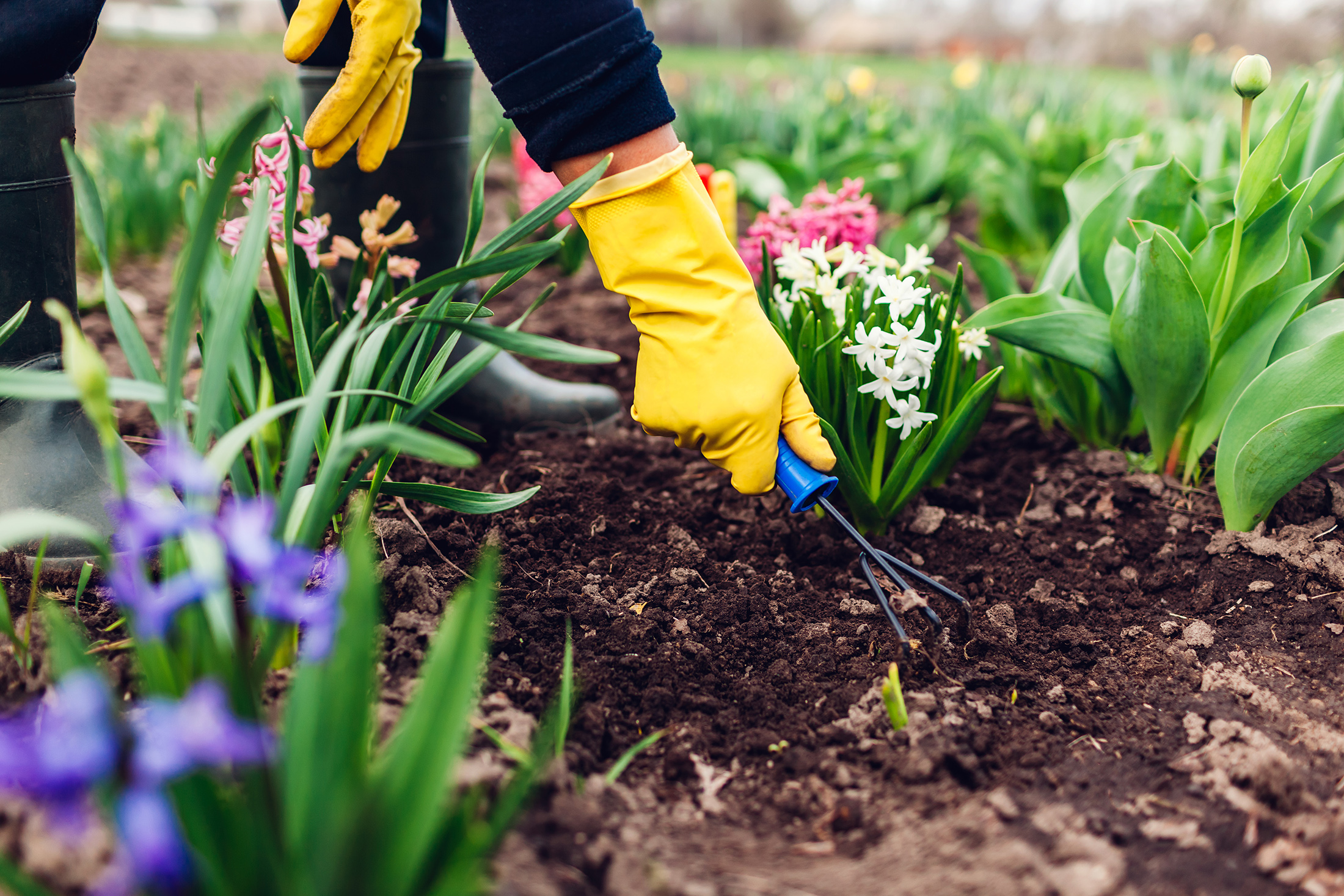
We’ve made it through the bulk of winter and spring is right around the corner-officially arriving on Thursday, March 20, to be exact! To prep your yard for the warmer months ahead, there are a few tasks that you can begin now, according to area landscaping pros. Below, two local experts share tips on what exactly to tackle so that you can enjoy your yard to the fullest once sunnier days are here.

Photo courtesy of Richardson & Associates Landscape Architecture
Make a Plan: Use the month of March to plan out what you’d like to incorporate in your garden, suggests Jordan Clough, associate principal at Richardson & Associates Landscape Architecture in Washington, D.C. “All of the nurseries are releasing their catalogs for the coming season, with many new cultivars coming onto the market,” he says. “Your garden is usually clear and open this time of year, giving you a good sense of the space you have to work with.” Be Ready to Plant: You’ll want to be able to hit the ground gardening when the time comes. Clough says, “If there are any patios, paths, terraces, or walls that need completion, it’s nice to get that done in time for spring planting season.”
Grab Some Mulch: Did you know that Arlington County, Fairfax County, and the City of Alexandria offer free mulch pickup for residents? “They’ll even deliver for a fee,” shares Deborah Sauri, co-founder of TriVistaUSA Design + Build in Arlington. “Mulch controls weeds, improves the soil for all your new Spring plantings, and looks great,” she explains.

Photo courtesy of TriVistaUSA Design + Build
Clean the Gutters: Go on up and tackle the gutters when you have a free weekend afternoon. “It’ll help prevent clogs before all our spring rain,” Sauri says. “In this area, we usually see our first mosquitoes in April, so keeping them clean will control infestations as well as rodents or mold.”
Prune Your Fruit Trees: It’s a great time to grab those shears. “Trees like Peach, Apple, Pear, and edible Cherry all benefit from a late winter/early spring pruning to open up the canopy to allow for better fruit production by increasing airflow and sunlight to the middle of the tree,” Clough says, noting that the goal is to create a bowl shape when you’re pruning. Looking to expand your selection? “This is also the time of year to plant any new fruiting trees, before they leaf out,” Clough says.
Take Charge of Removal: Use this time to say goodbye to invasive species and undesirable plantings, Clough says. “If there are invasive vines and shrubs, or other woody material that needs to be removed, removing them while they are dry and brittle in cool weather is far easier than trying to remove them in the mid-summer heat and humidity when they have all the weight of water and foliage,” he explains.
Add Solar Lighting: Upgrade your backyard with some inexpensive solar lighting, which Sauri has been enjoying herself. “I recently ordered some solar-powered lighting to line our driveway and illuminate our trees and bushes that will be blooming this spring,” she says.

Sarah Lyon is a New York City-based freelance writer, originally from Bethesda, MD. She contributes to a number of national design and lifestyle publications like Architectural Digest, Apartment Therapy, MyDomaine, the Washington Post, and more. Sarah also works with designers to help them style spaces for photo shoots. Find more shelfies on her Instagram page, @sarahlyon9
Visit corcoranmce.com to search listings for sale in Washington, D.C., Maryland, Virginia, and West Virginia.
Don’t miss a post! Get the latest local guides and neighborhood news straight to your inbox!
Winter Hosting Tips to Make The Season More Festive
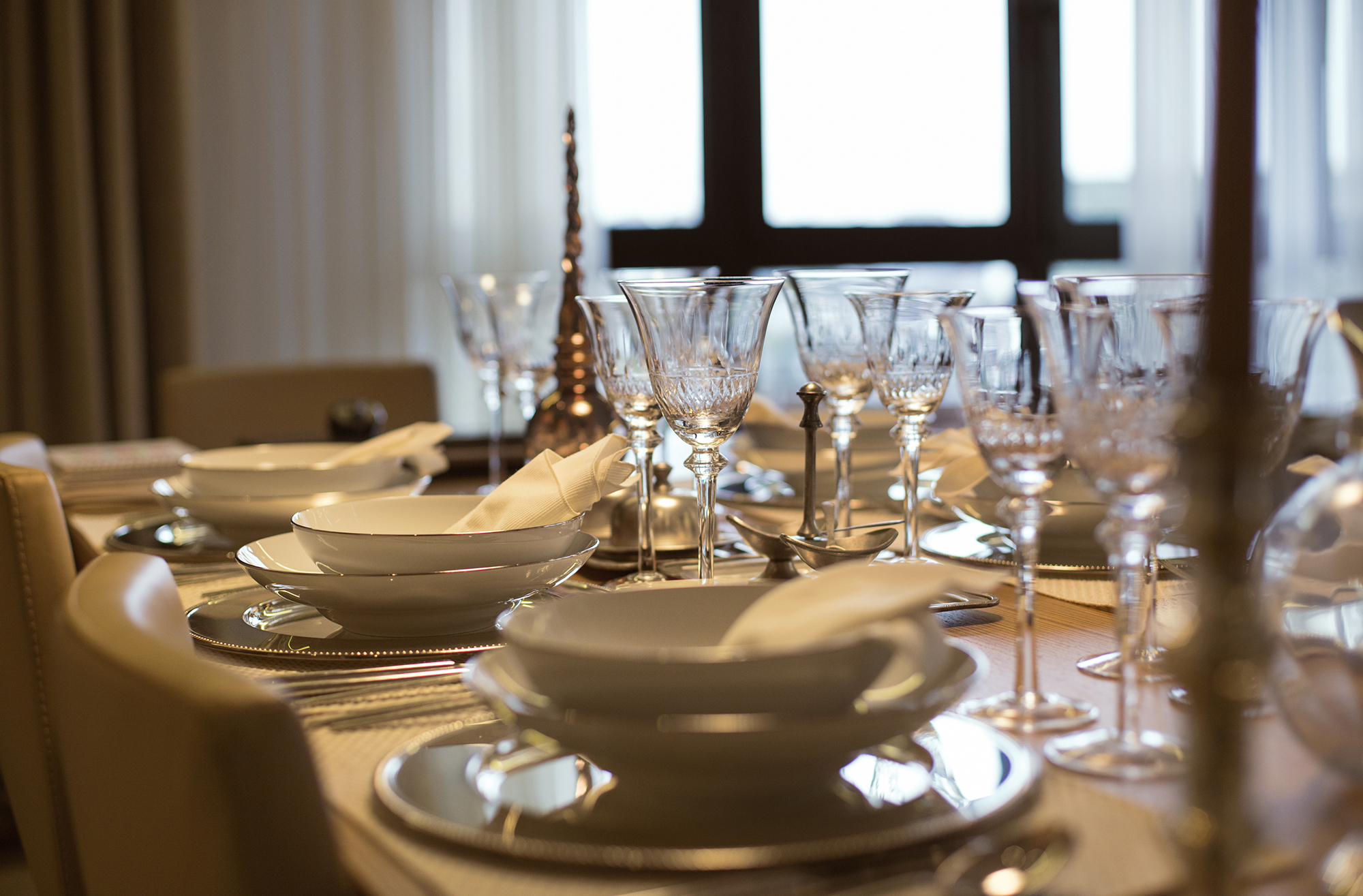
The holidays are over, but the temps are unpleasant, to say the least, and outdoor entertaining most likely won’t be a viable option for another couple of months. But how can you make your indoor gatherings feel festive and enjoyable during this dreary winter period? As it turns out, there are plenty of fun routes to take! We spoke with TK DMV area designers and creators to gather ideas for how to expertly host friends and family indoors while still keeping the vibes full of cheer.
Making the Evening Special
While you never need a reason to celebrate, a theme can help put guests in the mood (and help them determine what to wear!). Whether you’re looking to host a fancy night in or chill by the TV, you can’t go wrong with any of the ideas below.
Host a Formal Sunday Dinner, Just Because
Who needs an excuse to bust out the good china?
“While I enjoy easy-breezy outdoor entertaining in the summer, I admittedly love the excuse to pull out fancy dishes and host a more formal party in the colder months. I know some people save their china for the holidays, but I think it’s hard to beat a formal Sunday dinner in February with friends and their families. One of my favorite shortcuts for hosting is to buy premade pies and place pieces in fancy stemware—think dishes, teacups, or crystal glasses. I top the pie with a decorative cookie, piece of fruit, or sprig of mint, and it looks more like a layered trifle than a premade pie.” — Jewel Marlowe, Jeweled Interiors
Sing Karaoke
It’s not just for kids!
“It doesn’t matter what age your guests are, everyone loves a little karaoke, especially when you get to pick the songs. It’s such a great way to spend time with your friends, and I’m pretty sure you’ll make a few memories, too.” — Sara Raak, SKG Designs
Bust out the Fondue Set
It’s the perfect blast from the past.
“I love hosting cozy fondue parties with vintage fondue sets. I use the fondue set my mother had and it still works to this day. Warm cheese and chocolate are perfect for this time of year.” — Valerie Darden, Brexton Cole Interiors
Don’t Forget Something Sweet
Who can resist hot chocolate?
“For a more intimate party, hosting a movie marathon with a hot chocolate bar is a great idea. It’s fun to pick out winter-themed mugs and have a variety of hot chocolate fixings such as marshmallows, whipped cream, and sugar toppings. Adding in cute textures like blankets and pillows are a fun addition to this.” — Valerie Darden

Perfecting the Atmosphere
Once you’ve landed on a theme or activity, you’ll want to be sure to set the right vibes! Scent, lighting, and more will all help you take your gathering to the next level.
Be Mindful About Lighting
There’s simply no need for the “big light.”
“Lighting is so important when you’re hosting an event. I never use my big light, instead opting for several lamps, candles, and even ambient light from a TV or fun pendants in order to set the move.” — Imani Keal, Imani at Home
“All of my holiday decor heads back to storage after the new year, with the exception of our faux candles in the windows. I have them scheduled to flip on automatically during the darkest days of winter all the way through March. I pull out our vintage brass candlesticks and arrange them in every corner of the house — bonus points for adding a ribbon to the candlesticks to coordinate with the event. I like to use slightly unexpected lighting, like lighting a fire, a candle warmer, a reading light, or fairy lights twisted around serving platters, rather than the dreaded overhead lights. Hosting in the winter comes down to your guests feeling comfortable and cozy, and lighting helps me execute that.” — Amanda Witt Westly
Offer a Signature Cocktail or Mocktail
Specialty cocktails aren’t just for the holidays or wedding season.
“It’s always nice to create a beautiful cocktail moment so that guests can serve themselves—bonus hosting points for having their drink of choice ready to pour!” — Sallie Lord, GreyHunt Interiors
Style Your Tabletop to a T
Get creative with materials you already own.
“One way to take your indoor entertaining to the next level is to use winter fabrics in your decor or tablescape. For example, replace your linen tablecloth with a velvet tablecloth. A budget-friendly option is to add velvet placemats or napkins, or even suede. Playing around with more wintery fabrics is a way to level up your entertaining experience.” — Rashida Banks
Set the Mood with Scent
Consider this an excuse to buy a new candle.
“Adding a winter fragrance to your space is also a way to enhance the indoor entertaining experience. There are certain scents that give a cozy feel in the cold months, like cedarwood, sandalwood, vanilla, caramel, and amber. Having a fragrance with these types of notes in them feels like a nice warm hug to your senses so lookout for candles and diffusers with these aromas in mind.” — Rashida Banks
Ensure Guests Aren’t Too Cold (or Hot!)
Baby, it’s warm inside.
“Because I’m usually hosting in a small space, I really have to think about the temperature. Sure, it’s cold outside, but once you get five to 10 people inside of a small apartment, it will quickly become super hot inside! To get around this, I keep an eye on the thermostat throughout the night, adjusting it as more people arrive. I also make sure to stop using the stove a few hours before people arrive, so my gas range does not contribute to the rising temps. Opening up the windows to let in fresh air is always a good idea—it’ll keep the air from becoming stale with a consistent breeze.” — Imani Keal

Sarah Lyon is a New York City-based freelance writer, originally from Bethesda, MD. She contributes to a number of national design and lifestyle publications like Architectural Digest, Apartment Therapy, MyDomaine, the Washington Post, and more. Sarah also works with designers to help them style spaces for photo shoots. Find more shelfies on her Instagram page, @sarahlyon9
Don’t miss a post! Get the latest local guides and neighborhood news straight to your inbox!
30 Minute Organizing Tasks to Take on This Month
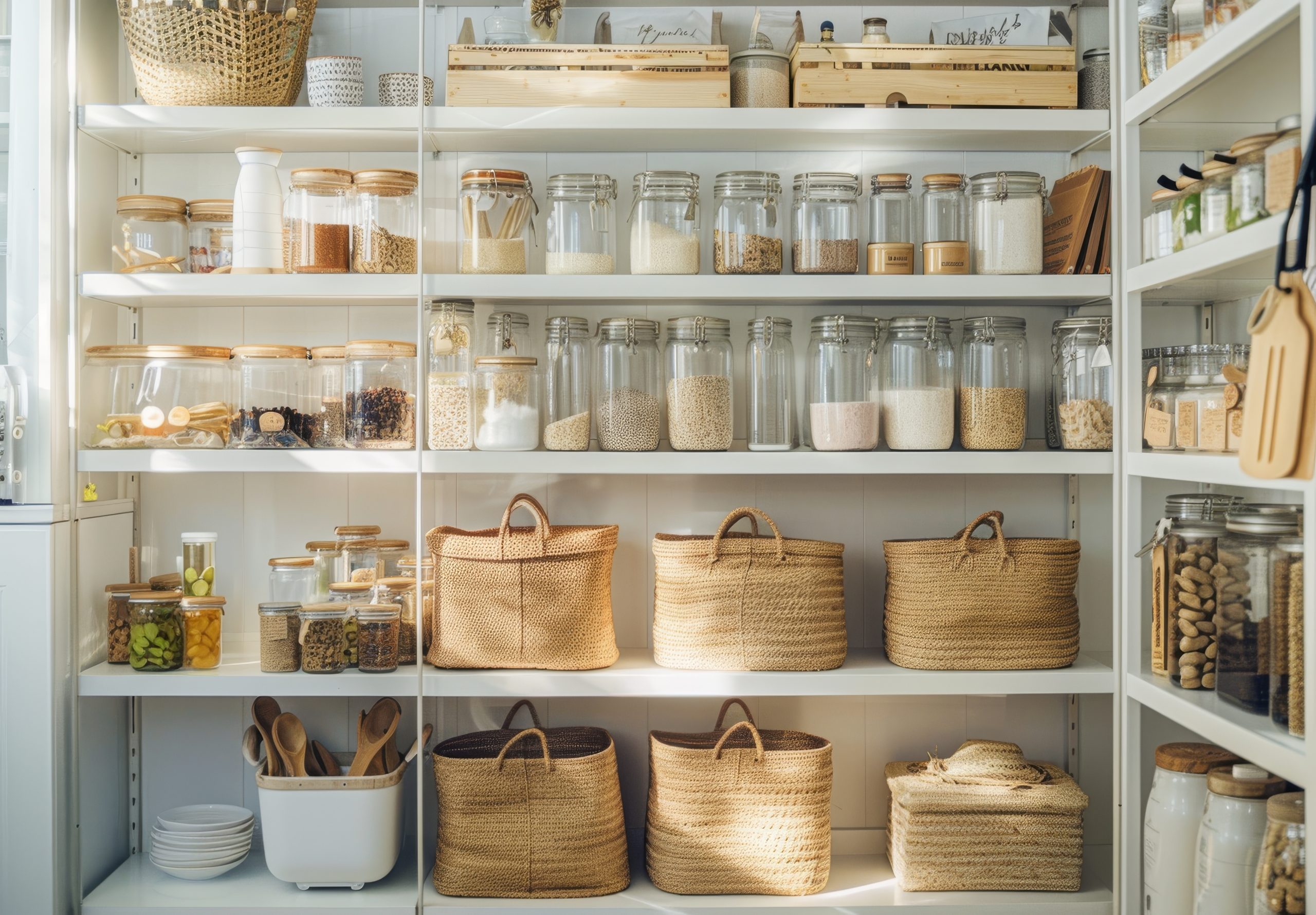
January means it’s time to get organized! Daunted by the idea of addressing your entire home in an entire day? There’s no need to do so—instead, break down your tasks into chunks so that everything feels much more manageable. In fact, you’d be surprised at how much you can tackle in just 30 minutes! Pick one of these half-hour tasks from DMV area pro organizers to do every day this week and watch the state of your home transform right before your eyes.
Refresh Your Bathroom Countertop
You utilize your bathroom countertop every day, multiple times a day, but when was the last time you really gave it an overhaul? Eryn Donaldson, the founder of The Model Home, recommends taking 30 minutes to edit your setup to get rid of unused products, expired items, and clutter. First, remove everything from your countertop and then toss the things you never reach for or are in poor condition. “Wipe down the surface and return only the essentials, perhaps grouping them in a small tray or organizer,” Donaldson instructs. “This small change can make your mornings feel more serene and streamlined.”
Sort Through Paperwork
Make this the year that you stop letting paperwork accumulate in your home. “Grab one stack of papers—whether it’s mail, bills, or miscellaneous documents—and dedicate 30 minutes to sorting, shredding, or filing,” Donaldson suggests. “Reducing paper clutter not only frees up space but also ensures you don’t miss important documents, giving you peace of mind as you start the new year.” Be sure to then pick up some file folders where you can safely keep the documents you do need.

Photo courtesy of Professional Organizer Lisa Malone
Address a Small Section of the Closet
You’ll likely need more than 30 minutes to organize your entire closet, but you can definitely address a small section of it in this amount of time—maybe your blazers or button-downs. “As you go through your items, sort them into four categories: keep, donate, relocate, and discard,” says Lisa Malone. She notes that most people only wear about 20 percent of their clothes. “Often, those favorite pieces are in the laundry or sitting on a chair because our closet is cluttered with things we don’t wear or that don’t belong there,” she says.
Deal with the Junk Drawer
Let’s face it, everyone has a junk drawer! If yours is looking a little chaotic, follow Rachel Rosenthal’s advice and spend 30 minutes dealing with it. “Start by emptying the drawer, tossing trash, and grouping similar items together, like pens, batteries, or takeout menus,” says the founder of Rachel & Company. Once you have done this, take measurements of the drawer. If you have small containers or dividers on hand, add them inside, otherwise, you can order a few. In the meantime, it’s fine to store items by category in Ziploc bags, notes Cheryl Larson, the founder of Cheryl’s Organizing Concepts.
“This project is valuable because it transforms a chaotic space into one that works for you, making it easier to find what you need and reducing daily frustration,” Rosenthal says.
Keep in mind that not everything that was originally in your junk drawer needs to stay in there. “Decide what items are better somewhere else,” Larson says. “Batteries, markers, and notepads are nice to have at hand, personal items might be better in your bathroom or purse, and office supplies can go in your desk.”
Go Through the Pantry
When was the last time you sorted through all of your canned and dried goods? “It’s important we start the year off right, starting with getting rid of expired food,” says Lavender Menakaya, the founder of Lavender Organizes. She offers a tip for making this process less overwhelming. “Instead of pulling everything out, concentrate on one or two categories of food like canned goods or spices,” the organizer says. “Simply throw out or donate the expired food and put back the non-expired food,” she adds, noting that the following week, you can move on to the next category of food.
Sort Through Your Car
One final 30-minute organizing project you can tackle this month is organizing the storage compartments in your car. Caroline Dockery, the founder of Categorically Caroline, recommends going through the glove box, arm console, back seat pockets, and more. “Discard trash, consolidate important items into an easy-to-reach bag or bin, replace cleaning or personal hygiene items, and double check car maintenance things like emergency kits, tire pressure gauges and the like,” she says. “It’s also a great time to verify when your car registration will be due this year!”

Sarah Lyon is a New York City-based freelance writer, originally from Bethesda, MD. She contributes to a number of national design and lifestyle publications like Architectural Digest, Apartment Therapy, MyDomaine, the Washington Post, and more. Sarah also works with designers to help them style spaces for photo shoots. Find more shelfies on her Instagram page, @sarahlyon9
Don’t miss a post! Get the latest local guides and neighborhood news straight to your inbox!
Renovation 101: How To Create A Spa-Like Bathroom Sanctuary
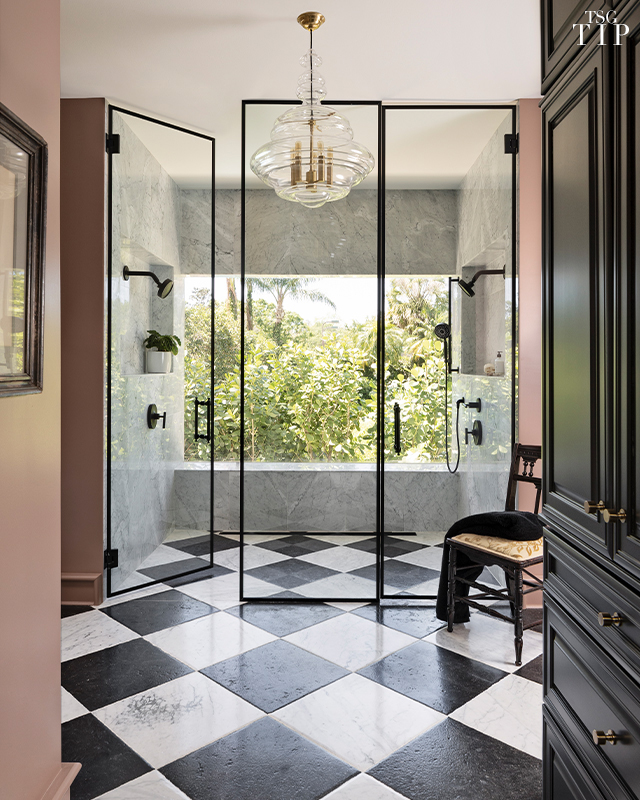
Feature photo: Photography by Amy Lamb of Native House Photography.
From our partners at The Scout Guide, here is some inspiration on how to create that spa-like bathroom in your own home!
A sunny spot to prepare for the day ahead, a soothing haven perfect for unwinding—a bathroom that doubles as your personal refuge can serve as the ultimate interior luxury. We’ve tapped principal designer and interior tastemaker, Tracee Murphy of Trade Mark Interiors, in Sarasota, Florida, to share her expert tips for transforming this space into a spa-like bathroom and a place of respite and delight.
1. Seek inspiration
As with any design project, designing a beautiful spa-like bathroom begins with gathering inspiration. Murphy encourages clients to peruse images, focusing on materials and color palettes that evoke the vibe they’re hoping to achieve, paying attention to the way the images make them feel. If the image elicits a feeling of zen, you’ve hit on the right inspiration for your space. She recommends clients seek out imagery with lush greenery, soothing colors, and natural materials.
2. Nod to nature
“Biophilic design, a philosophy that seeks to reconnect people with nature by incorporating natural elements into their surroundings, is extremely important,” Murphy says. Incorporating views of nature and natural elements into your design, the presence of natural materials (like plants, wood, stone, and water) are soothing and offer many health benefits, including lowering blood pressure. In the project pictured above, Murphy opted to use marble and limestone, as well as an antiqued edge on the floor tile for a natural, classic look. She also recommends incorporating plants into your bathroom design if you have a natural light source.
3. Let there be light
Good lighting is a crucial part of a bathroom’s design, and while an abundance of natural light is always preferred, Murphy advises enhancing it with well-placed artificial light. “Backlit mirrors are my go-to, as well as decorative sconces flanking the central usable area in the bathroom,” she says. “It’s very important to make one look their best while getting ready for their day and lighting from sconces is more flattering than overhead lighting which can create harsh shadows.”
4. Soften up
What can sometimes be a cold, utilitarian space can be morphed into a spa-like bathroom with the right color palette. “Warm, muted tones create a cozy atmosphere versus cool tones which are a bit more lively,” Murphy says. Some of her favorite colors include Benjamin Moore’s Brandy Cream, Georgetown Pink Beige, Dragonfly, and Chocolate Candy Brown. Want to instantly cozy up your space? She recommends adding a vintage rug or unique artwork to add personality and warmth.
TSG Tip 486 from Tracee Murphy of Trade Mark Interiors, in Sarasota, Florida. Trade Mark Interiors appears in The Scout Guide Sarasota. Click here to discover more TSG Tips from Scouted experts.
Don’t miss a post! Get the latest local guides and neighborhood news straight to your inbox!
![]()

 Facebook
Facebook
 X
X
 Pinterest
Pinterest
 Copy Link
Copy Link









 Jennifer Zschunke
Jennifer Zschunke


